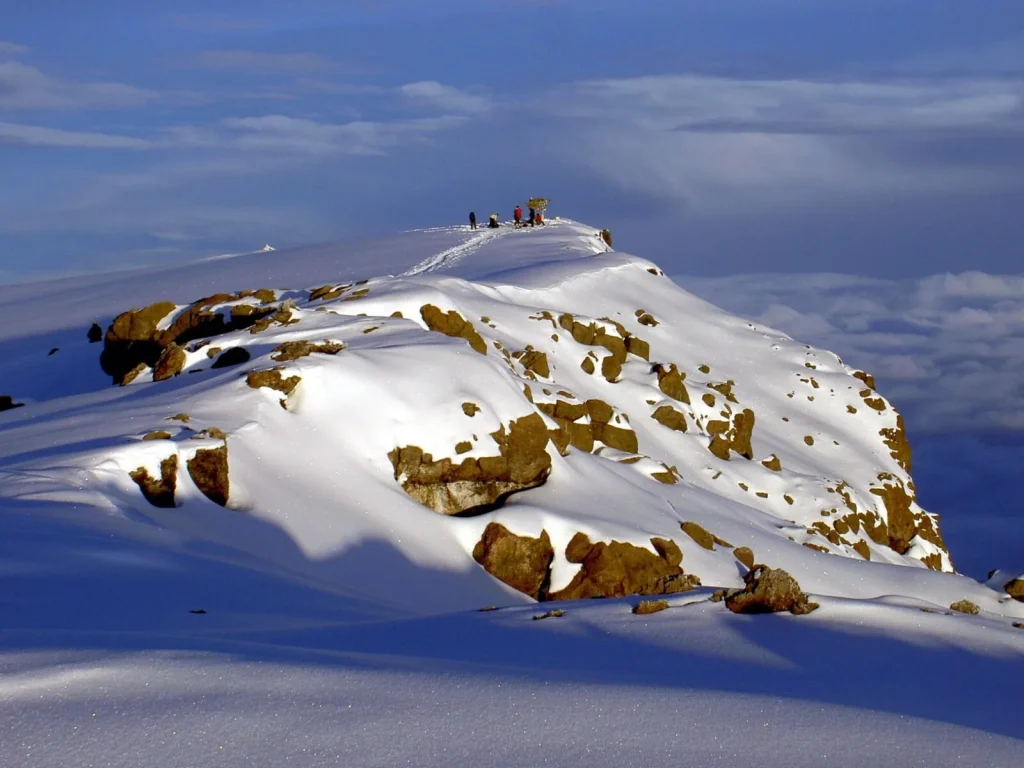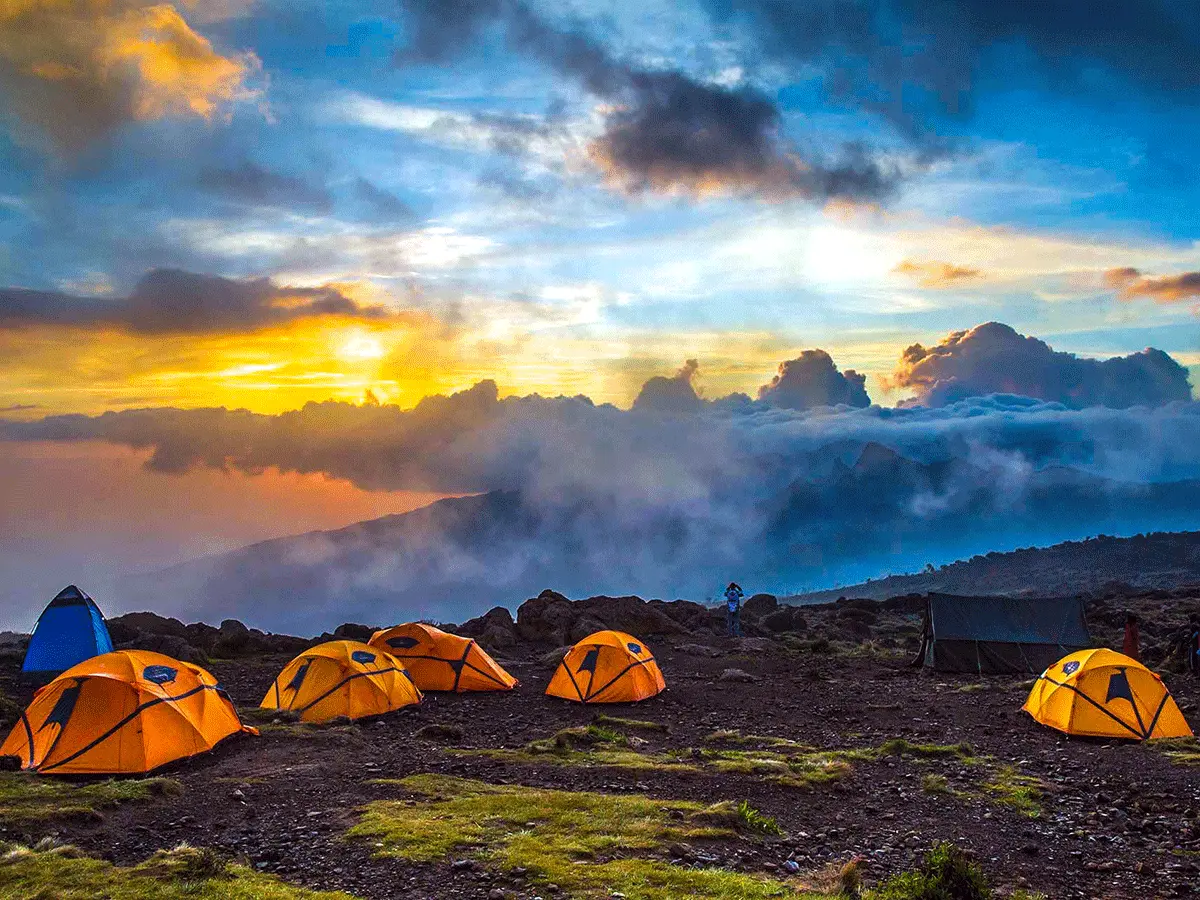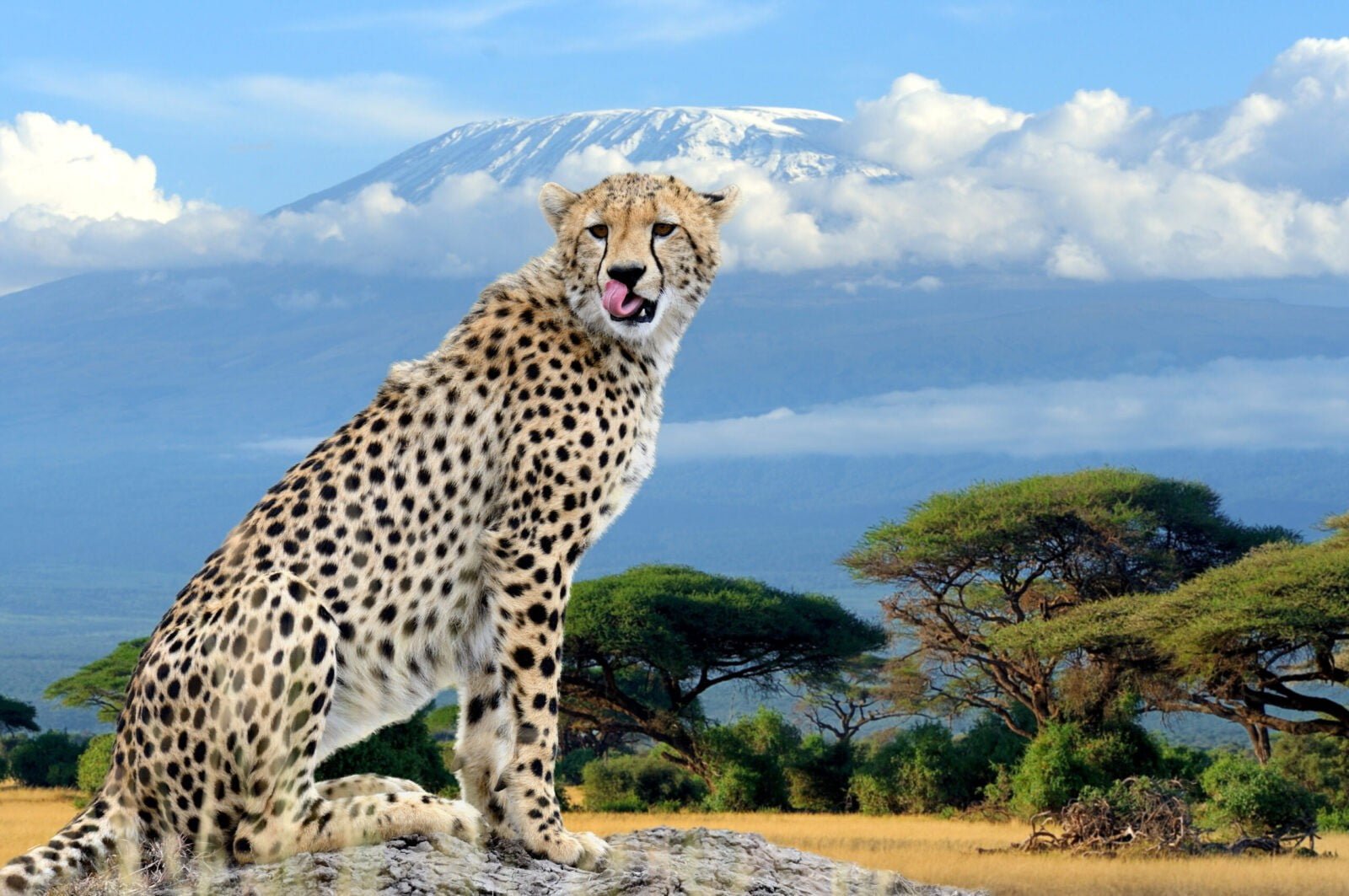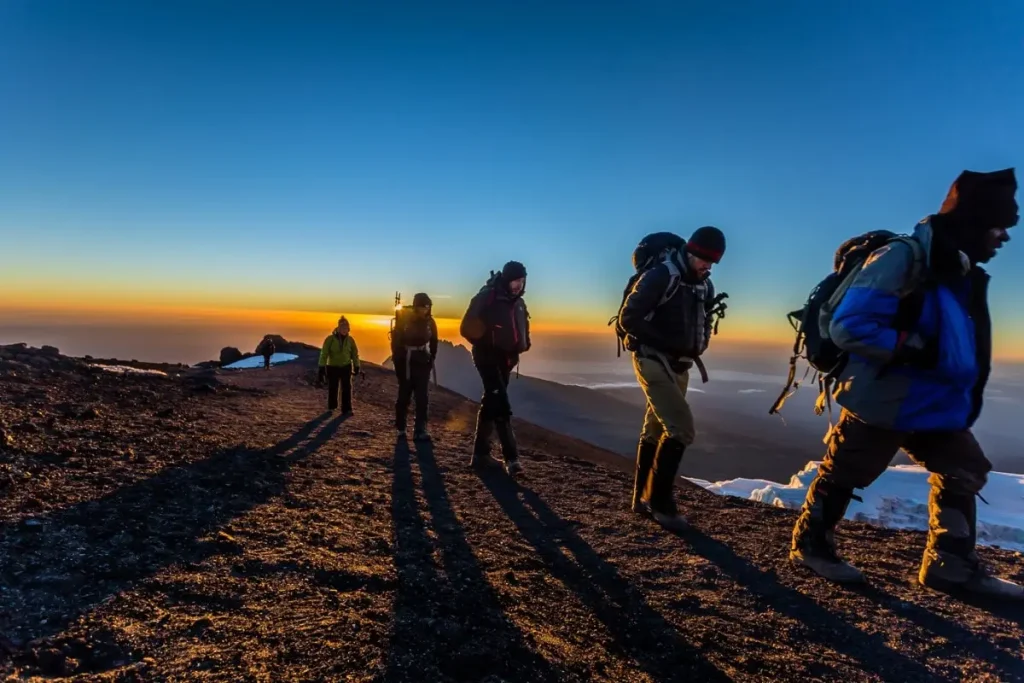-- Wenzi Travel --
Kilimanjaro Climb
Mt. Kilimanjaro
Climbing Kilimanjaro is the experience of a lifetime. It’s certainly not hard to see why this trek tops bucket lists around the world. The mighty Mount Kilimanjaro is the highest mountain in Africa at a staggering 5,895 metres (19,341”), and the world’s highest free-standing mountain. Though many of the mountain’s routes are not for the faint-hearted, with an experienced guide at your side, you certainly don’t need to be an experienced climber to reach its summit.
Kilimanjaro packages
Kilimanjaro national park is a popular destination for travellers who are up for a challenge. Here we delve into everything you need to know about your Mount Kilimanjaro trek, from our best recommended Kilimanjaro itineraries to how to the practicalities of preparing for the adventure of the lifetime.
Kilimanjaro itineraries
Once you’ve made the decision to climb Mount Kilimanjaro, the next step is to choose the best route for you. There are a total of seven main Mount Kilimanjaro routes which lead to the summit. One route begins on the Northern side of the mountain and the remaining six begin on the Southern side. Wenzi Travel offers climbing Kilimanjaro itineraries for all the different Kilimanjaro Routes. The main question is which route should you choose?
Kilimanjaro climbling routes: overview
Best for beginners – Marangu or Machame Routes
Spectacular scenery – Lemosho or Machame Routes
Beginners with a budget – Marangu Route
For moderate hikers – Machame or Lemosho Routes
Expert hikers – Umbwe Route
Most popular Mount Kilimanjaro route – Machame Route
Longest Mt Kilimanjaro route – Northern circuit
During rainy season – Rongai Route
Highest success rate? – 8 days Lemosho Route or 9 days Northern Circuit
Kilimanjaro routes: pros and cons
There are seven different Kilimanjaro climbing routes to choose from, each with various pros and cons to suit the capabilities of the hiker. They all differ in length, difficulty, scenery, traffic, accommodation and a myriad of varying factors.
The Wenzi Travel team are experts at defining the best route for your journey, taking all the hassle out of your once-in-a-lifetime trip in Africa. With hundreds of successful summits under our belt from clients from all over the world, we take time to listen to your group’s specific needs and requirements when organising your Kilimanjaro climb. The most popular routes with our clients are the Machame Route, Maranga Route or Lemosho route.
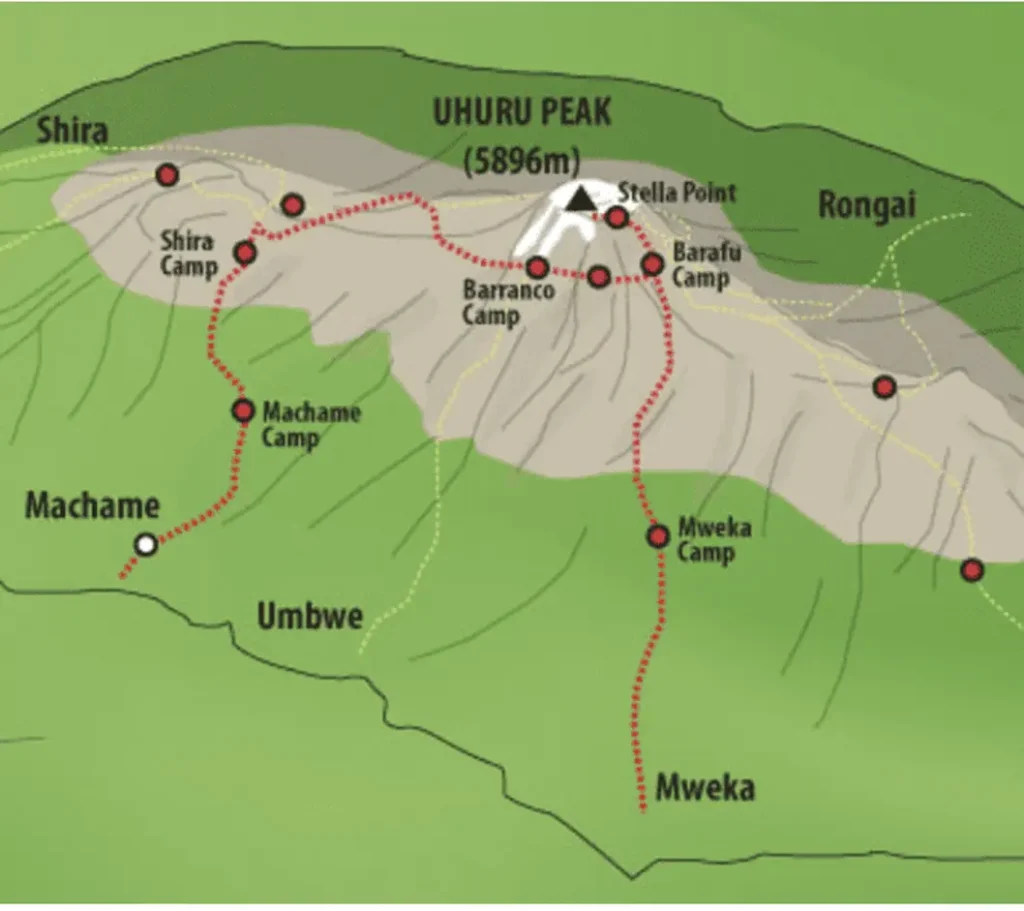
Machame Route
Also known as the “Whiskey Route”, Kilimanjaro’s Machame Route is one the most popular climbing routes in Tanzania. Better yet, this route has a fantastically high success rate. The route has a gradual ascend which gives your body more time to adjust to the altitude. The trail circles around the mountain, offering up spectacular views and a wide variety of landscapes.
During this route, you will walk through the green rainforest to the amazing Shira Plateau. The last ascent to the crater rim at Stella Point is probably the most challenging part of this route and does require at least a basic level of fitness.
How long the Machame Route takes is up to you! It can be done in 6 or 7 days and, in our experience, there is a much higher chance of submitting Africa’s largest mountain on a 7-day Kilimanjaro hike!
PRO: The Machame Route is less expensive than most of the others, due to its shorter route and easy access
CON: This route can be quite busy, especially during the peak season
Marangu Route
This route, nicknamed the “Coca-Cola” route, has a reputation for being one of the easiest paths on the mountain. Though it is certainly the shortest route on the mountain, this does not necessarily mean it is the easiest! As this is a shorter route, your body has less time to acclimatize properly, increasing the chances of fatigue and ultimately decreasing the chances of reaching the summit on this route.
Some climbers prefer this route because of the hut accommodation, in contrast to camping in tents as is seen on the majority of other mountain treks. Unfortunately, this also means less privacy! (Plus, there’s nothing like camping out under African skies!). The Marangu Route is the best for those on a budget and is one of the cheapest routes to reach the top of Kilimanjaro.
PRO: The Marangu Route is one of the cheapest and quickest Mount Kilimanjaro routes. This route also offers hut accommodation in dorm rooms – a benefit for those looking to stay away from camping!
CON: This route can be quite busy, especially during the peak season. As you will do the same trail for your descent as you did for your ascent, you get to see less of the spectacular scenery!


Lemosho Route
The Lemosho Route is a beautiful and unique route, known for its breathtaking views. In contrary to other Mount Kilimanjaro climbing routes, it starts on the western side of Kilimanjaro. Because of this, the Leomosho Route is less crowded with climbers and offers a much more secluded hiking experience.
Better yet, the Lemosho trail is completely unspoiled, making for a breathtakingly beautiful adventure up to the famous Shira Plateau. After a few days, the Lemosho Route joins the Machame Route at Lava Tower. You can do this route in 7 or 8 days, and it does require a decent level of fitness!
CONS: Lemosho is undoubtedly a more expensive route – it’s a long trail and requires extra transport to the other side of the mountain.
PROS: The price is definitely worth it! The Lemosho route gives climbers plenty of time to acclimatize properly, the views are spectacular and the success rates to reach the summit are high. This is one of the most beautiful and complete routes to climb Kilimanjaro.
Best time to climb Kilimanjaro
Climbing Mount Kilimanjaro is a year-round experience. At Wenzi Travel, we provide expert advice on the best time for you to plan your Kilimanjaro trip based on your individual requirements.
The two main climbing seasons are the dry months from December to March and from June to October. The warmest months are from December to March. During these months the skies are clearer and there is less chance of snow on the trail. February is the best month since the temperature is high and the chances of rainfall are low. From June to October, the temperatures on the mountain are noticeably colder and the trails are busier.
During the rainy season, it can be wet, slippery and the visibility may be limited. Most climbers avoid these seasons, although some experienced climbers and adventurous travellers prefer to climb at this time. There are certainly some pros: a lack of crowds being a big draw!
How to prepare for climbing Kilimanjaro
Even though there is a route for every level on Mount Kilimanjaro, it’s important to be able to cope with around 6-7 hours of walking every single day. This can be gruelling, so preparation is always a fantastic idea. During an average climbing day, you will walk 6-7 hours per day. In the months leading up to your trip, head out on long hikes every few weeks, gradually building up your stamina to endure a full weekend hike.
Other exercises that can help with preparing for your trek include yoga and breathing classes. Stretching out your body and mind makes your muscles stronger and less likely to let you down when you need them most!
Climbing Kilimanjaro costs
The costs for climbing Kilimanjaro depend on the route you choose. We work with our clients to create custom Kilimanjaro itineraries for a wide range of budgets – from shoestring to bespoke luxury. Aside from tour operator costs, other expenses to consider include:
- Buying the right equipment: think walking poles, hiking boots, waterproof daypack, breathable clothing etc.
- Travel insurance for climbing Kilimanjaro. You can also choose an additional flying Doctors insuarance.
- Tipping guides and porters: the porters and guides work very hard – often for little money. Tipping on Kilimanjaro is standard and helps support the local community.

